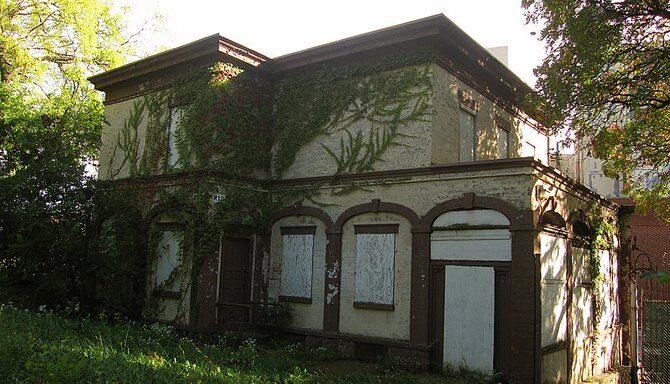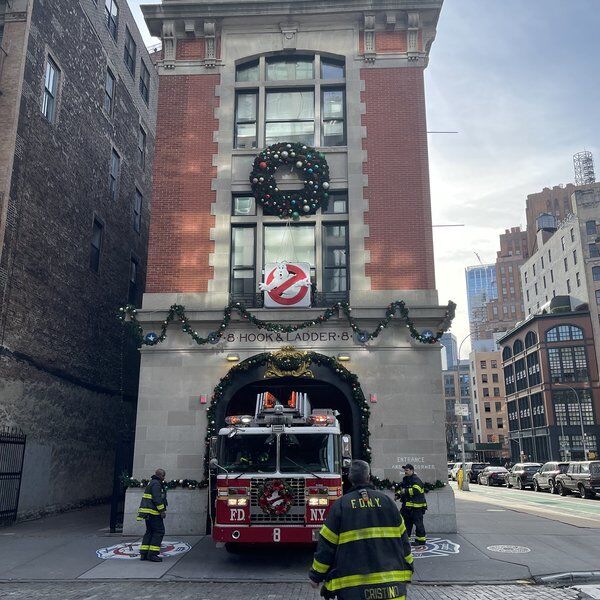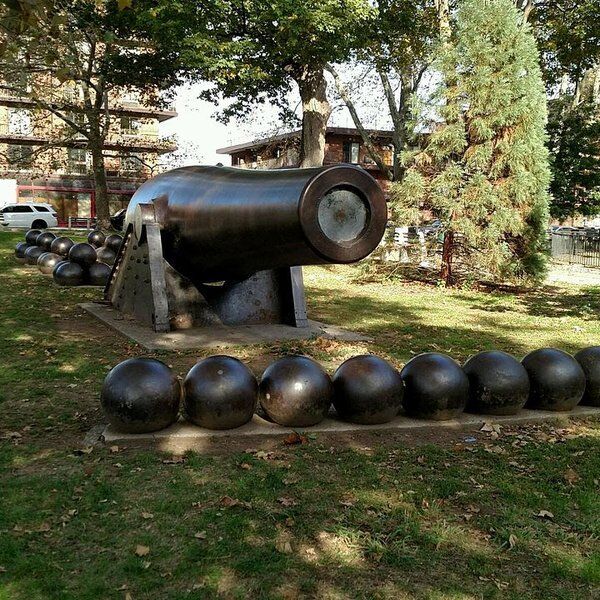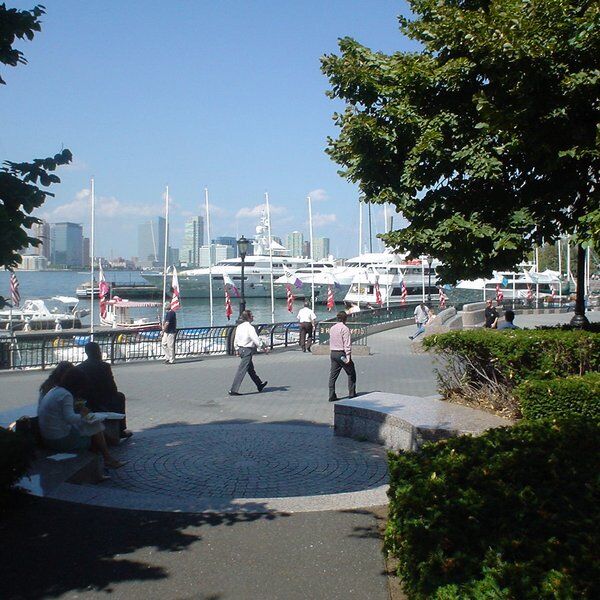Discover the Brooklyn Naval Hospital
The Brooklyn Naval Hospital, located within the Brooklyn Navy Yard in New York City, is a significant relic of American medical and military history. This historic institution operated from 1838 to 1948, serving as a critical healthcare facility for sailors and military personnel across multiple wars. Today, the hospital complex and two of its landmarked buildings remain integral parts of the Navy Yard's storied past, attracting interest from historians, preservationists, and curious visitors.

The History of the Brooklyn Naval Hospital
Creating the Hospital
The initial concept for the Brooklyn Naval Hospital was born out of a need for a dedicated medical facility for Navy personnel. Prior to its establishment, medical treatment was provided in a less-than-ideal makeshift hospital within the main Brooklyn Navy Yard. This facility was vulnerable to flooding, lacked proper sterilization, and could not effectively prevent disease.
Recognizing these limitations, the Navy acquired a 25-acre land parcel for a new hospital in 1824, in what was then a rural part of Brooklyn. Construction commenced in 1830, and by 1838, the main building was completed. The exterior was clad in Tuckahoe marble, lending the structure an air of classical grandeur.
Wartime Role and Medical Advancements
As one of the United States' most prominent naval hospitals, the Brooklyn Naval Hospital was instrumental during times of war. Throughout the Civil War, it treated nearly a quarter of Union casualties, expanding its capacity to accommodate 450 patients at its peak. Later, during World War I, further expansions increased capacity to approximately 3,000 beds.
The hospital also became a site of medical innovation. Dr. E.R. Squibb, a pioneering chemist and pharmacist, developed and refined anesthesia ether while working at the hospital’s pharmaceutical laboratory in the 1850s, a breakthrough that revolutionized surgical practices.
Decommissioning and Later Uses
Following World War II, the Brooklyn Naval Hospital’s role began to wane. In 1948, the facility was officially decommissioned, and its operations transferred to the new St. Albans Naval Hospital in Queens. Though no longer an active hospital, the Navy continued to use some of the buildings for administrative purposes until the late 1980s. By that time, the Brooklyn Navy Yard itself was transitioning away from military use, eventually becoming a hub for industrial and creative businesses.
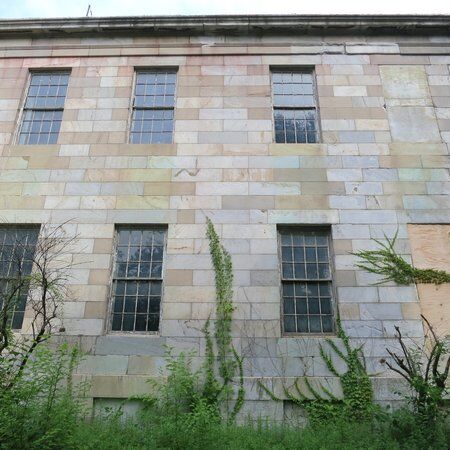
Preserving the Brooklyn Naval Hospital
Landmark Status and the Fight for Preservation
In 1965, the New York City Landmarks Preservation Commission designated the Old United States Naval Hospital as one of the city’s earliest landmarks. This designation was met with both support and resistance, as representatives from the Department of the Navy expressed concerns about federal properties being subject to local preservation laws. However, the designation prevailed, safeguarding the building's status and setting a precedent for landmarking other federally-owned properties.
Listing on the National Register of Historic Places
In 2014, the entire Brooklyn Navy Yard Historic District, including the Brooklyn Naval Hospital, was added to the National Register of Historic Places. This recognition helped secure the site's place in American history, emphasizing the importance of the hospital and the broader Navy Yard as essential contributors to the nation's military and industrial legacy.
Restoration Plans and Future Developments
Today, much of the Brooklyn Navy Yard has been repurposed into a center for industry and innovation, but parts of the old hospital complex remain vacant. In recent years, Steiner Studios—a major film and television production company located within the Navy Yard—proposed a plan to restore and repurpose the hospital’s historic structures as part of a media campus expansion.
This restoration project, which began in 2017, aims to rehabilitate numerous buildings within the hospital campus, including the main hospital structure, Surgeon’s House, and several auxiliary buildings. While preserving 15 historic buildings, Steiner Studios' project will also incorporate landscaped green spaces, bringing new life to the once-dormant site.
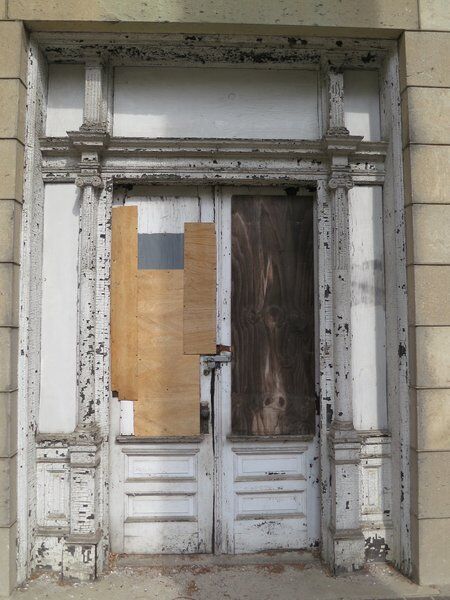
Inside the Brooklyn Naval Hospital
The Greek Revival Main Building
The Brooklyn Naval Hospital’s main building, designed by architect Martin E. Thompson, is a prime example of Greek Revival architecture. This 60,000-square-foot structure is known for its granite façade. Its grand design also includes massive stone columns in a portico that extends along the front. Notably, two wings were added in 1840, creating a unique “E” shape.
The Surgeon’s House
Adjacent to the main building lies the Surgeon’s House, an imposing two-story structure built in 1864 in the French Second Empire style. This residence, with its dormer windows and shadowy presence, has the appearance of a haunted mansion amidst overgrown trees. Designed with segmental arches and a Mansard roof, its both beautiful and mysterious. Inside, the house has sixteen rooms and a servant’s quarters.

The Hidden Cemetery
Behind the hospital lies what appears to be an ordinary field, but this land holds a secret. It was once the hospital’s official cemetery, where the remains of nearly a thousand individuals were interred between 1831 and 1910. Although most headstones were moved to Cypress Hills Cemetery in 1926, remnants of the original burial sites are thought to remain beneath the soil.
Among the buried is the Fijian chief Veidovi, infamous for his involvement in a cannibalistic attack before he was captured and brought to the United States. Apparently, Veidovi’s death mask famously greeted visitors at the hospital for years. Plans are underway to convert this cemetery into a memorial park, with native plants and raised walkways.
Other Structures in the Naval Hospital Complex
The Brooklyn Naval Hospital complex also includes a range of other historically significant structures. The Nurses’ Quarters, built in 1919, was an important addition for the care team and was later expanded in 1980. The Italianate-style Quarters 4, initially a surgeon’s residence, served various roles over the years, including housing for sick officers.
Buildings such as the Infectious Disease Quarters, built in 1915, and a former medical supply depot designed by Ernest Flagg, contribute to the diverse buildings and architectural styles that make up the naval hospital complex.
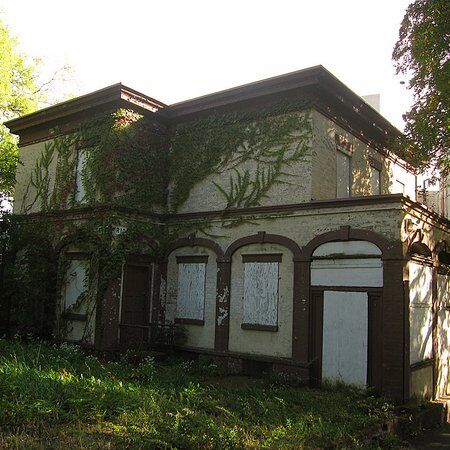
Little-Known Facts about the Brooklyn Navy Yard
The Brooklyn Navy Yard, where the Naval Hospital is located, is home to several surprising features beyond its naval and medical history:
- Rooftop Vineyard: The Brooklyn Navy Yard houses the world’s first commercially viable rooftop vineyard. Created by Rooftop Reds, this urban vineyard spans 14,800 square feet, developed with the help of agricultural experts from Cornell University.
- Walt Whitman’s Connection: Poet Walt Whitman once lived near the Brooklyn Navy Yard, in the Wallabout neighborhood. He likely drew inspiration from the area, completing parts of Leaves of Grass nearby.
- Beekeeping Initiative: The Brooklyn Navy Yard also supports urban agriculture. The Brooklyn Grange operates a rooftop farm atop one of the yard’s buildings, complete with a bee-training program that produces honey and offers educational sessions.
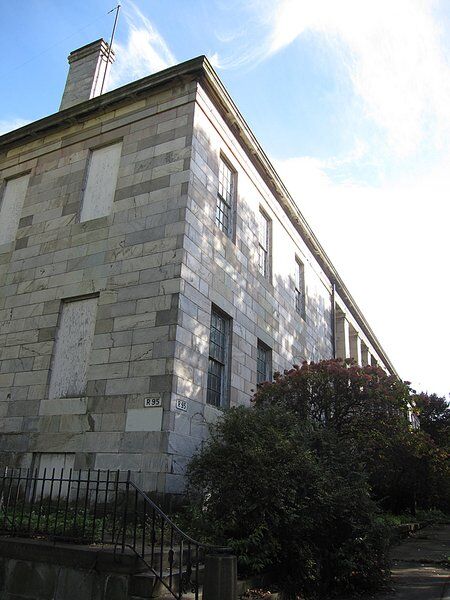
Visiting the Brooklyn Naval Hospital
While the Brooklyn Naval Hospital remains mostly off-limits to the public due to ongoing redevelopment plans, visitors can explore the broader Brooklyn Navy Yard, which offers tours highlighting its naval history, wartime role, and architectural landmarks.
Through guided visits, guests gain insight into the life of naval yard workers and the pivotal role of this site during significant events in American history. The future memorial park on the old hospital cemetery will eventually provide a more accessible area to experience the hospital’s haunting yet impactful legacy firsthand.
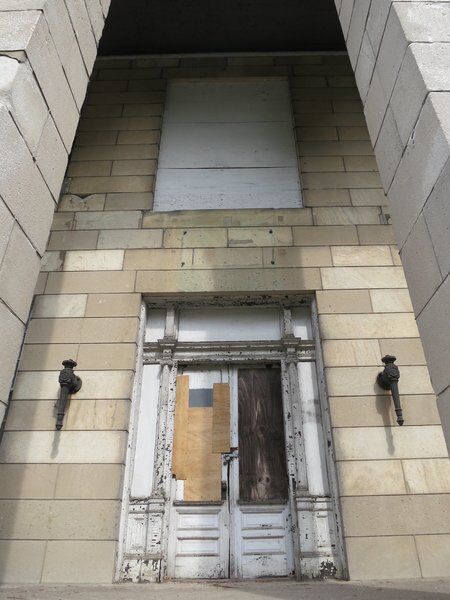
Go Beyond the Brooklyn Naval Hospital with CityDays
Discover New York’s secret sites and noteworthy nooks by playing one of our New York treasure and scavenger hunts, escape room games or walking tours.
You’ll find curated trails and hunts all over New York, including Manhattan, Chelsea, Midtown and Chinatown.
All you have to do is team up with your friends, family or whoever to solve riddles, complete challenges and answer trivia to lead you on an unforgettable journey around New York’s most intriguing streets.
The best part? We’ll recommend top-rated bars, cafés and restaurants and give your team the chance to earn rewards by competing on our leaderboard.
CityDays gives you total freedom to start and finish whenever you like, take extra breaks if you want or need them, and it’s suitable for people of all ages.
You’re also guaranteed your money back if you don’t have an amazing time—although our previous reviews speak for themselves: we’re rated 5/5 on TripAdvisor and 4.95/5 on Google Reviews!
